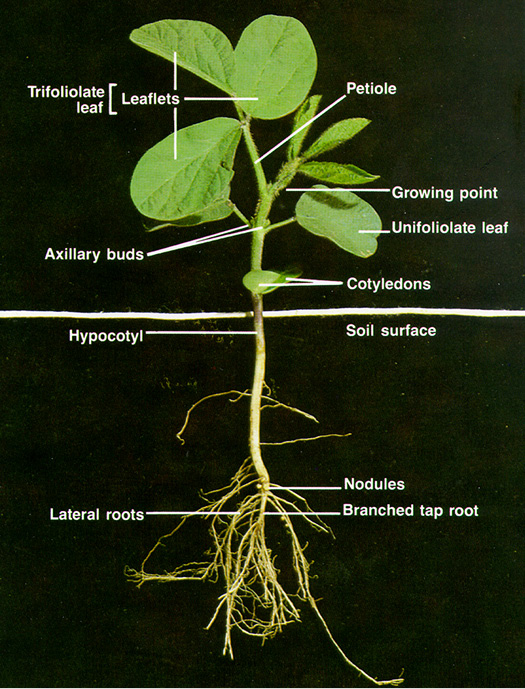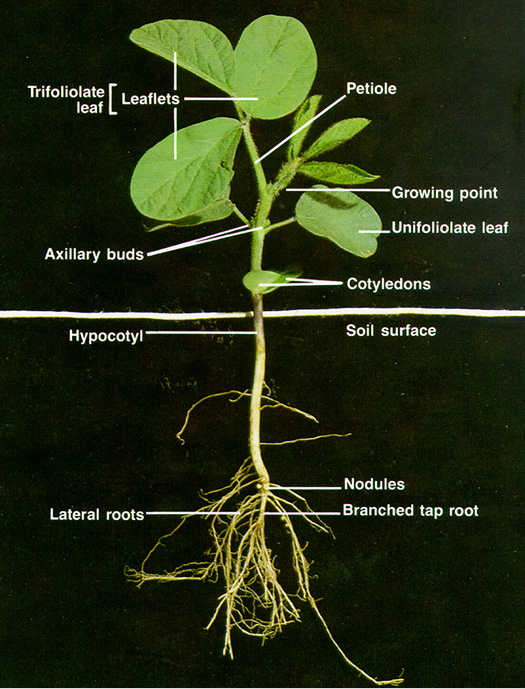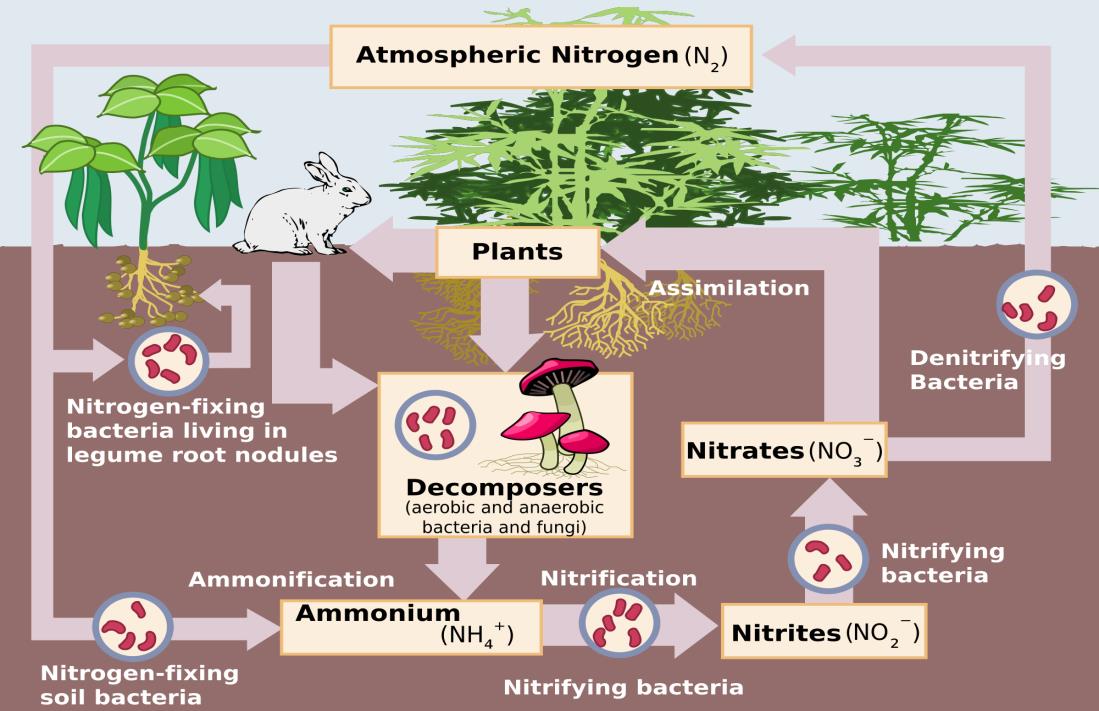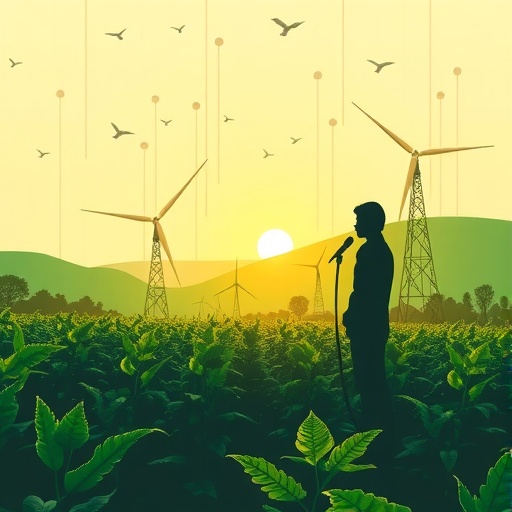Identifying the most sensitive growth stages of soybean to defoliation – Nature

Executive Summary
This report details a study conducted to identify the most sensitive growth stages of soybean (Glycine max (L.) Merrill) to photoassimilate limitations, a critical factor for ensuring crop productivity and advancing global food security. By simulating stress through defoliation across various growth stages, the study provides crucial insights for sustainable crop management. The findings directly support the achievement of the United Nations’ Sustainable Development Goals (SDGs), particularly SDG 2 (Zero Hunger), by offering strategies to prevent yield loss and maintain the nutritional quality of this vital global crop. The research determined that the early seed development stage (R5 to R5 + 1 week) is the most vulnerable period. Stress during this window leads to the greatest reductions in seed weight, pod weight, and overall productivity. These results underscore the necessity of targeted agricultural practices that protect soybean crops during this critical phase to ensure responsible production patterns (SDG 12) and build resilient agricultural systems (SDG 13).
Introduction: Aligning Soybean Productivity with Sustainable Development Goals
Soybean is a cornerstone of global food systems, providing essential protein and oil. Maximizing its productivity is fundamental to achieving SDG 2 (Zero Hunger), which aims to end hunger, achieve food security, improve nutrition, and promote sustainable agriculture. However, soybean yields are threatened by various biotic and abiotic stresses (e.g., pest attacks, drought, hailstorms) that reduce the plant’s capacity for photosynthesis by damaging its leaves (defoliation). This limitation in photoassimilate supply can severely impair growth and reduce final yield.
Identifying the specific growth stages where soybean is most vulnerable to such stress is vital for developing targeted and efficient management strategies. Such precision agriculture aligns with SDG 12 (Responsible Consumption and Production) by enabling farmers to optimize the use of inputs like pesticides and fertilizers, applying them only when and where they are most needed. This approach minimizes waste and environmental impact. This study was designed to pinpoint these critical periods by applying a consistent level of defoliation (67% leaf removal) across the soybean life cycle, from the vegetative (V4) to the late reproductive (R7) stages.
Methodology
The research was conducted through field experiments using two soybean cultivars from different maturity groups (MG2 and MG4) to ensure the findings’ applicability.
- Experimental Design: A Randomized Complete Block Design was used. Two separate experiments were conducted, one for each cultivar.
- Treatment Application: Manual defoliation (67% leaf removal) was applied at nine distinct growth stages:
- V4 (Vegetative Stage)
- R2 (Full Bloom)
- R3 (Beginning Pod)
- R5 (Beginning Seed)
- R5 + 1 Week
- R5 + 2 Weeks
- R5 + 3 Weeks
- R5 + 4 Weeks
- Control (No Defoliation)
- Data Collection: Key parameters related to crop yield and quality were measured, including unit seed weight, unit pod weight, seed-filling duration, and seed composition (protein and oil concentration). Physiological traits such as plant height and stomatal conductance were also monitored.
- Statistical Analysis: Data were analyzed using ANOVA to determine the significance of defoliation timing on the measured parameters.
Key Findings: Pinpointing the Critical Growth Window
The study revealed that while defoliation at most growth stages negatively impacted soybean yield, the effects were most severe during the early seed development period.
Impact on Yield Parameters
- Most Sensitive Stage: The greatest reduction in yield occurred when defoliation was applied during the early seed development stages, specifically from R5 (beginning seed) to R5 + 1 week.
- Seed and Pod Weight: Unit seed weight and unit pod weight were significantly reduced by defoliation during the R5 to R5+2 weeks window. For instance, in one experiment, defoliation at R5+2 weeks caused a 32% reduction in seed weight compared to the control.
- Seed-Filling Duration: The time required for seeds to mature was significantly shortened by stress during the R2 to R5+1 week period, indicating that the plant accelerates maturity at the expense of yield when photoassimilate supply is limited.
Impact on Seed Quality and Nutritional Value
- Protein and Oil Content: The accumulation of protein and oil, key components for nutritional value and economic viability, was most compromised by defoliation during the early to mid-seed filling stages. This directly impacts the quality of soybean as a food source, a crucial consideration for SDG 2.
- Protein Concentration: Protein concentration decreased most significantly with defoliation at early reproductive stages (V4 to R5).
- Oil Concentration: Oil concentration was most negatively affected by defoliation during the mid-seed filling stages (R5+1 week and R5+2 weeks).
Impact on Plant Physiology
- The effects of defoliation on general plant growth traits like height, node number, and chlorophyll content were limited and inconsistent. This indicates that even when the plant appears physiologically stable, underlying yield potential is being compromised, highlighting the covert danger of stress during sensitive periods.
Discussion: Implications for Sustainable Agriculture and the SDGs
The results of this study have profound implications for creating more sustainable and resilient agricultural systems, directly contributing to several SDGs.
Advancing SDG 2: Zero Hunger
By identifying the R5 to R5+1 week stage as the most critical window for yield determination, this research provides actionable knowledge to safeguard food supplies. Protecting crops during this period is paramount for preventing yield losses and ensuring a stable supply of high-quality, protein-rich food. This is a direct contribution to achieving food security and improved nutrition for a growing global population.
Promoting SDG 12: Responsible Consumption and Production
Knowledge of this sensitive stage allows for the adoption of precision agriculture. Instead of broad, season-long applications of pesticides or other protective measures, resources can be focused on the early seed-filling period. This targeted approach ensures:
- Reduced use of chemical inputs, lowering costs for farmers and minimizing environmental contamination.
- Enhanced resource efficiency, a core principle of sustainable production.
- Minimized crop loss, reducing food waste at the production level.
Building Resilience for SDG 13 (Climate Action) and SDG 15 (Life on Land)
Climate change is projected to increase the frequency of stressors like pest outbreaks and extreme weather (e.g., hailstorms) that cause defoliation. This research helps build agricultural resilience by informing the development of climate-smart practices. By understanding which growth stages are most vulnerable, farmers can better prepare for and mitigate the impacts of climate-related events. Furthermore, by enabling more efficient land use to maximize yields, this knowledge helps reduce the pressure to convert forests and other natural habitats into farmland, thereby supporting SDG 15.
Conclusion and Recommendations
This study concludes that the early seed development stage (R5 to R5+1 week) is the most sensitive period in the soybean life cycle to limitations in photoassimilate supply. Stress from defoliation during this critical window causes the most significant and irreversible damage to yield and seed quality.
To align soybean production with the Sustainable Development Goals, the following recommendations are proposed:
- Implement Targeted Crop Monitoring: Farmers and agronomists should prioritize monitoring for pests, diseases, and nutrient deficiencies during the R5 stage to enable timely and precise interventions.
- Develop Stage-Specific Management Guides: Agricultural extension services should create and disseminate best-practice guides that emphasize protecting the soybean canopy during the early seed-filling period.
- Enhance Crop Insurance and Support Policies: Policymakers should consider the heightened risk during this stage when designing support programs, incentivizing protective measures that contribute to both farmer livelihood and national food security.
- Focus Future Research: Further research should explore genetic traits that enhance resilience to defoliation during this critical stage and test management strategies across diverse environments to validate these findings.
By adopting these strategies, stakeholders can work collaboratively to protect soybean productivity, ensuring this vital crop continues to support the global goals of ending hunger and promoting sustainable agriculture for generations to come.
Analysis of Sustainable Development Goals (SDGs) in the Article
1. Which SDGs are addressed or connected to the issues highlighted in the article?
The article’s research on soybean productivity and resilience to stress directly connects to several Sustainable Development Goals (SDGs). The primary goal addressed is SDG 2, with secondary links to SDG 12 and SDG 15.
- SDG 2: Zero Hunger: This is the most relevant SDG. The study focuses on “maintaining soybean productivity” and minimizing “yield losses.” By identifying the most sensitive growth stages of soybean, the research provides critical knowledge for effective crop management to ensure stable and high yields. Soybeans are a vital global source of protein and oil, making their productivity essential for food security and nutrition. The article explicitly states that understanding these stages is “vital for effective crop management” and avoiding stress is “critical for maintaining soybean productivity.”
- SDG 12: Responsible Consumption and Production: The research contributes to sustainable production patterns. By identifying methods to reduce yield loss from stressors (simulated by defoliation), the study promotes more efficient agriculture. Maximizing the output (yield) from a given set of inputs (land, water, fertilizer) reduces waste and enhances resource efficiency, which is a core principle of SDG 12. The conclusion emphasizes avoiding “nutrient and other input limitations,” which aligns with the efficient use of resources.
- SDG 15: Life on Land: The article discusses the impact of various “biotic or abiotic stresses, such as drought, high temperatures, pest attack” on soybean crops. Understanding how crops respond to these stressors is fundamental to developing resilient agricultural systems that can adapt to environmental challenges and climate change. This research on crop resilience helps in promoting agricultural practices that are sustainable and do not degrade land ecosystems, which is relevant to protecting life on land.
2. What specific targets under those SDGs can be identified based on the article’s content?
Based on the article’s focus, the following specific SDG targets can be identified:
-
Target 2.3: By 2030, double the agricultural productivity and incomes of small-scale food producers…
Explanation: The entire study is centered on increasing agricultural productivity. The abstract concludes that avoiding stress during the “early seed-filling stage, is critical for maintaining soybean productivity.” The research provides actionable insights for farmers to prevent yield loss, directly contributing to the goal of increasing productivity. -
Target 2.4: By 2030, ensure sustainable food production systems and implement resilient agricultural practices that increase productivity and production, that help maintain ecosystems, and that strengthen capacity for adaptation to climate change, extreme weather, drought, flooding and other disasters…
Explanation: The article investigates how defoliation—a proxy for stressors like “hailstorms, pest outbreaks,” drought, and disease—impacts soybean yield. By identifying the “most sensitive stage to defoliation,” the study helps build resilient agricultural practices. This knowledge strengthens the capacity for adaptation to various disasters, ensuring more sustainable and stable food production systems. -
Target 12.2: By 2030, achieve the sustainable management and efficient use of natural resources.
Explanation: The research aims to prevent “yield losses” and “reduced yield.” By improving crop management to maximize productivity, the findings support the more efficient use of natural resources like land, water, and soil nutrients. Less crop loss means more food is produced per unit of resource input, aligning with this target.
3. Are there any indicators mentioned or implied in the article that can be used to measure progress towards the identified targets?
Yes, the article is rich with quantitative indicators used to measure the impact of defoliation on soybean crops. These metrics serve as direct or indirect indicators for measuring progress towards the identified SDG targets, particularly those related to agricultural productivity and resilience.
-
Yield and Productivity Indicators: These are direct measures for Targets 2.3 and 2.4.
- Unit Seed Weight (mg seed-1): The study measures this to quantify the impact on yield, noting a “maximum decrease in unit seed weight… with defoliation at R5+2 weeks.”
- Unit Pod Weight (mg pod-1): Used as another key yield component, with the article finding the “greatest reduction in pod weight occurred at defoliation at R5 and defoliation at R5 + 1 week.”
- Yield Reduction (%): The article frequently refers to percentage reductions in yield components (e.g., “78% yield losses” from defoliation in other studies) as a primary indicator of stress impact.
-
Crop Quality and Nutrition Indicators: These relate to the quality aspect of food production in Target 2.4.
- Protein Concentration (g kg-1) and Content (mg seed-1): The study measures seed protein, a critical nutritional component of soybean. It found that “protein content decreased with the early seed filling to mid seed filling stage defoliations.”
- Oil Concentration (g kg-1) and Content (mg seed-1): As a key commercial and nutritional product of soybean, oil content was measured and found to follow a “similar pattern under assimilate limitation.”
-
Crop Health and Resilience Indicators: These are relevant for measuring resilience under Target 2.4.
- Seed Filling Duration (days): The study found that this duration “significantly decreased with early stages defoliation,” indicating that stress can accelerate maturity and reduce the time for nutrient accumulation.
- Physiological Traits (SPAD, Stomatal Conductance): The article measured “chlorophyll content index (SPAD)” and “stomatal conductance” as indicators of the plant’s physiological response to stress, although it found “limited and inconsistent effects.”
4. Table of SDGs, Targets, and Indicators
| SDGs | Targets | Indicators Identified in the Article |
|---|---|---|
| SDG 2: Zero Hunger |
2.3: Double agricultural productivity.
2.4: Ensure sustainable food production systems and implement resilient agricultural practices. |
|
| SDG 12: Responsible Consumption and Production | 12.2: Achieve the sustainable management and efficient use of natural resources. |
|
| SDG 15: Life on Land | 15.3: Combat desertification, restore degraded land and soil… and strive to achieve a land degradation-neutral world. |
|
Source: nature.com

What is Your Reaction?
 Like
0
Like
0
 Dislike
0
Dislike
0
 Love
0
Love
0
 Funny
0
Funny
0
 Angry
0
Angry
0
 Sad
0
Sad
0
 Wow
0
Wow
0












































































